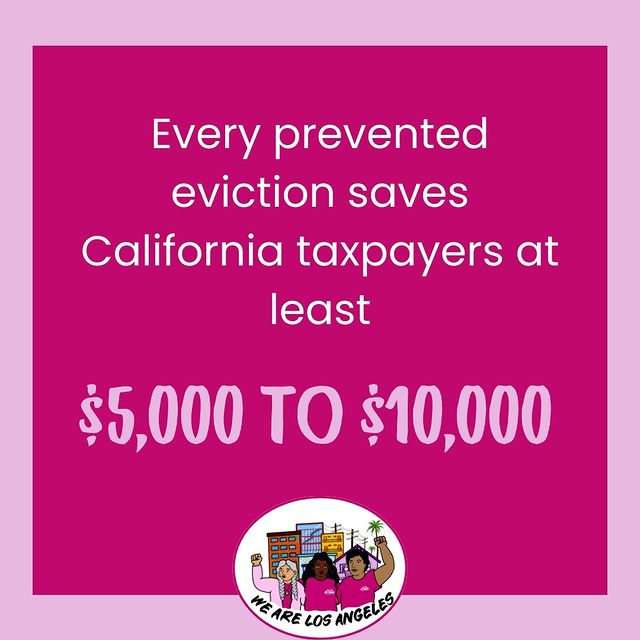Health Net News Now

May 2024
Telehealth vs In-Person Visits

During the early days of the COVID-19 pandemic, there was a shift towards telehealth, with many companies offering new online services. According to a February 2024 Forbes article, while patients appreciate the option of telehealth, as risks from gathering decrease, most prefer in-person appointments for healthcare needs - except for mental health, where 86% prefer virtual visits.1
Another factor in this trend is that physicians worry about earning less from telehealth visits than they do for in-person, and some payers have ceased coverage of telehealth visits.
However, lawmakers are working toward payment parity with several bills aimed at extending telehealth coverage, payment parity, access, and provider scope of practice. Examples of bills in Congress include2:
- The Telehealth Expansion Act would permanently extend pre-deductible coverage of telehealth services for highdeductible health plans with a savings account. Congress established this exception in 2020 temporarily for 2 years and extended it for another 2 years through 2024.
- The Telehealth Benefit Expansion for Workers Act would allow employers to offer stand-alone excepted benefit telehealth plans to all employees. Currently, employers may offer stand-alone telehealth benefits to employees who are not eligible for the employer's health coverage. This bill would require standalone telehealth plans to be subject to some Affordable Care Act (ACA) regulations like lifetime or annual cost-sharing limits, prohibition of exclusion based on pre-existing conditions, and no cost-sharing coverage of preventive services. Large employers would still be required to provide ACA-regulated comprehensive employer-sponsored health coverage for full-time employees.
- The Protecting Rural Telehealth Access Act would extend Medicare coverage and payment flexibility for certain telehealth or audio-only services.
- The Telemental Health Care Access Act would eliminate Medicare requirement that mental and behavioral health providers see patients in-person in 6-months prior to a first virtual visit and at regular intervals thereafter—this requirement is set to go into effect starting on January 1, 2025.
All of this means that we're likely to see telehealth remain an option for most individuals.
Health Net provides members access to Teladoc Health (Teladoc) which offers virtual health care that's convenient, with confidential access to quality U.S. board-certified doctors. Members can book appointments through the Teladoc app, website or call 1-800-TELADOC (835-2362).
Medical appointments are available 24 hours a day, 7 days a week from wherever you are.
Behavioral health professionals can be booked 7 days a week 7:00 a.m. to 9:00 p.m. (Pacific time).
1 MMM Online
2 Private insurer payments for telehealth and in-person claims during the pandemic - Peterson-KFF Health System Tracker

DMHC Releases Large Group, Individual, and Small Group Annual Premium Rate Reports
The California Department of Managed Health Care recently released the following Annual Premium Rate reports for Measurement Year 2023:
Large Group Aggregate Rates and Prescription Drug Costs Report for Measurement Year 2023 (PDF)
Individual and Small Group Aggregate Premium Rate Report Year 2023 (PDF)
SB 546 (2015) requires health plans to submit aggregate rate information for products in the large group market. In addition, SB 17 (2017) requires health plans to submit specific prescription drug cost information. The Large Group rate report looks at the reasons for changes in the rates, benefits, and cost sharing in the large group market as well as prescription drug costs on health plan premiums.
Assembly Bill (AB) 2118 (2020) requires health plans that offer commercial products in the individual and small group market to report annually to the DMHC specified information, including premiums, enrollment, and trend factors. The Individual and Small Group report looks at the individual and small group aggregate rate information, benefits, cost sharing and weighted average rate on health premium. All DMHC Reports can be accessed on the DMHC website.
Health Net CanopyCare HMO For Large Group
Focused on care in the San Francisco Bay area, CanopyCare HMO offers local, quality care within the Canopy Health network. Members can access a broad list of prominent providers and plan options with affordable and predictable costs!
CanopyCare HMO offers:
- Affordability – Benefit of a year-two rate cap, allowing for competitive, predictable budgeting of health care costs.
- Access – Encompassing 10 counties in the San Francisco Bay Area (Alameda, Contra Costa, Marin, Napa, San Mateo, Santa Clara, Santa Cruz, San Francisco, Sonoma and portions of Solano). – Through an integrated network of medical groups, members have a choice with access to over 5,500 physicians at these prominent providers: Hill Physicians, John Muir Health, Dignity Health, Meritage, SCCIPA and Providence Medical Network – Sonoma and Napa. Access also includes 30 Hospitals and 70 urgent cares in the Bay Area.
- Employee Choice – With 23 plan benefit designs, including 7 with facility deductibles, there are options to fit a variety of needs.
- Provider Access – Provider Access referrals are within Canopy Health Networks panel of providers only. – With a PCP referral, members can access any specialist in the Canopy Health network through the Alliance Referral Program. Including specialists outside of their chosen Canopy Health medical group spanning across 10 counties.
- Flexibility – CanopyCare HMO is available under Health Net’s Enhanced Choice Solutions – it’s most flexible multi-carrier (e.g. Kaiser) underwriting program that’s specifically designed for the 101–500 eligible employee market.
CanopyCare HMO is offered by Health Net of California, Inc. Health Net of California, Inc. is a subsidiary of Health Net, LLC and Centene Corporation. Health Net is a registered service mark of

Health Net's Elite Partners Program Contest is Launching Soon!
Aloha!
We’re thrilled to announce the next Elite Partners Program (EPP) contest is just around the corner. Just like in years past, our top performing Brokers will earn an exclusive stay in a tropical island paradise.
They’ll meet with Health Net Senior leadership, discuss trends and learn new ways to create more business. All while mixing in some Mai Tais and soaking in some sun. Are you in?
More Details on How to Win Are Coming Soon.

Mayor's Fund's eviction-prevention program receives $2.8 million investment from Bob & Dolores Hope Foundation and Health Net
Recognizing the importance of preventing evictions in overcoming Los Angeles's homelessness crisis, The Bob & Dolores Hope Foundation has donated $1.5 million and Health Net $1.3 million to support the Mayor's Fund for Los Angeles' We Are LA program.
We Are LA connects people at risk of eviction to every resource available to them to help them maintain stable housing. The two organizations join L.A. Care Health Plan, which made previous investments totaling $1.8 million, as the program's biggest donors. L.A. Care's early support was critical for getting the We Are LA program off the ground and establishing its success.
"We must bring unhoused Angelenos inside while doing all that we can to prevent people from falling into homelessness in the first place, and that means local government partnering with businesses and philanthropists across the city to confront this crisis," said Mayor Karen Bass. "Earlier this year, L.A. Care Health Plan made a generous donation to the Mayor's Fund for this important effort and now I want to commend The Bob & Dolores Hope Foundation and Health Net for taking this courageous step and joining this effort. This is not a fight we will win if private philanthropy does not lock arms with us in this effort to provide the life-saving resources that Angelenos deserve. Thank you to our philanthropic partners for locking arms and partnering with us to confront the greatest challenge facing our city."
We Are LA has reached out to over 411,000 at-risk Angelenos, including targeted outreach to people who have received notices of intended eviction. We Are LA also operates a hotline and organizes tenant resource clinics to help reach anyone who fears they may lose their home. Once the team connects with a person who wants help, caseworkers assess all of the resources available to that individual and help them navigate the bureaucracy of applying for government and charitable programs. The program has served over 32,000 individuals and families to help them avoid eviction and stay housed.
Start Smart for Your Baby®
Support for a Healthy Pregnancy and Newborn
Start Smart for Your Baby® is a program for pregnant members and new parents. It is designed to help members get the customized care they need for a healthy pregnancy and baby.

This benefit is included in Health Net Plans.
Start Smart for Your Baby® offers Health Net members:
- Information about pregnancy, newborn, and postpartum care.
- Resources to help them get the things they need during pregnancy and after the baby is born including:
- food
- cribs
- housing, and
- clothing
- Breastfeeding support and resources.
- Staff that works with the member and their doctor through a more difficult pregnancy.
- Resources if the member is feeling down or anxious during or after pregnancy.
- Methods to help reduce or quit smoking, drinking alcohol, or taking other substances.
Members can learn more about the program and get started on our Start Smart for Your Baby® webpage, or by calling their health plan at the number listed on their ID card.
5 Things You May Not Know About Cinco de Mayo

Who wouldn't love any day dedicated to tacos, burritos, guac and Margaritas? But there's so much more to Cinco de Mayo than food— and it's important to know why it's celebrated.
These and more facts about the history of the holiday can be found at:
History of Cinco de Mayo - Mid-Continent Public Library
- Cinco de Mayo Isn't Mexico's Independence Day
Cinco de Mayo is often confused with Mexican Independence Day. But it actually commemorates a significant battle during the Franco-Mexican War that took place in Puebla, Mexico on May 5, 1862. Cinco de Mayo translates to the Fifth of May, which is when the holiday is celebrated, however, the holiday's official name is El Día de la Batalla de Puebla, which translates to "The Day of the Battle of Puebla". - The Mexican Army Beat Unbelievable Odds
In the Battle of Puebla, the Mexican army was largely outnumbered and poorly supplied, with only outdated guns. Yet, as few as 2,000 Mexican soldiers—some of whom hid behind tall cactus plants—defeated 6,000 French soldiers during the battle, which lasted from daybreak to early evening. - Families in California Partied First
A few weeks after the Battle of Puebla, Americans and Latinos in California heard about the valiant efforts of Mexican soldiers through newspaper reports. Residents in the state were so excited that they celebrated with parades of people dressed in Union Civil War uniforms. In Northern California, one town partied with drinks, food, and banquets—it was most likely the first Cinco de Mayo fiesta in the United States! - FDR Helped Commercialize Cinco de Mayo
Although it was celebrated in the United States just weeks after the Battle of Puebla, Cinco de Mayo didn't gain traction in the US until 1933. That's when President Franklin D. Roosevelt helped create the "Good Neighbor Policy," which aimed to establish positive exchanges and relationships with our Latin American neighbors. - The U.S and Mexico Celebrate the Holiday Differently
While Cinco de Mayo is largely a regional holiday in Mexico—mostly celebrated in Puebla with parades, speeches, and reenactments of the 1862 battle, it is not much noticed in most of the rest of the country. The United States holds coast-to-coast celebrations. This is especially true in cities with a large Mexican American population, like Chicago, Los Angeles, and San Antonio.
